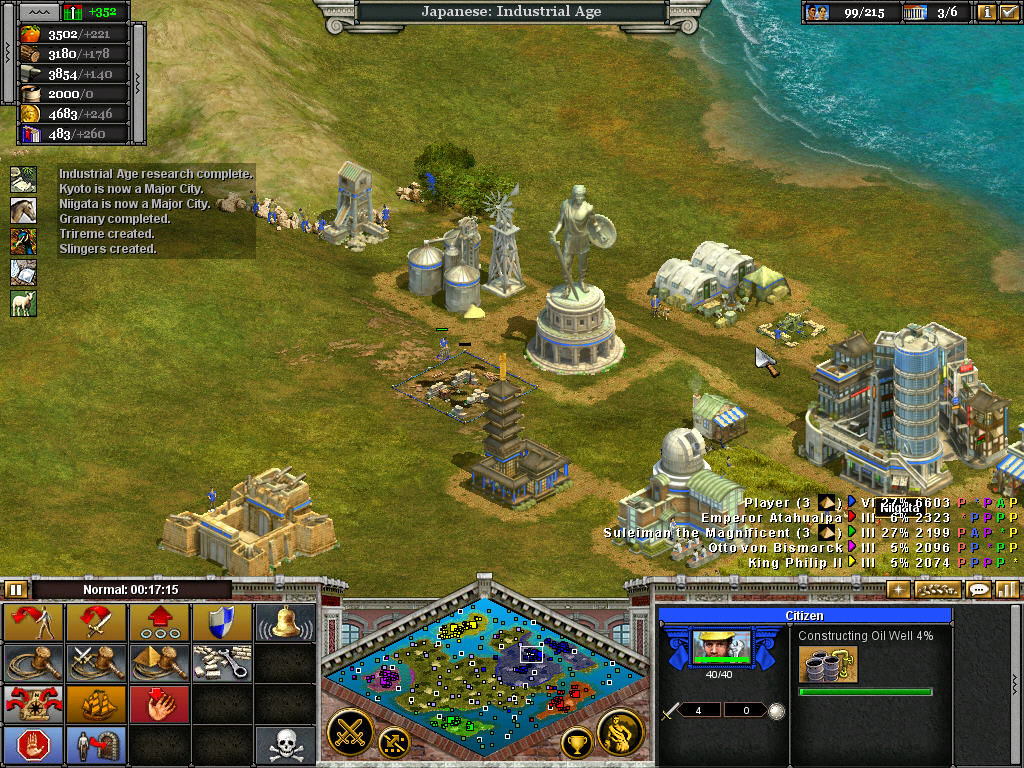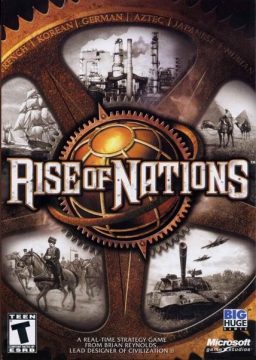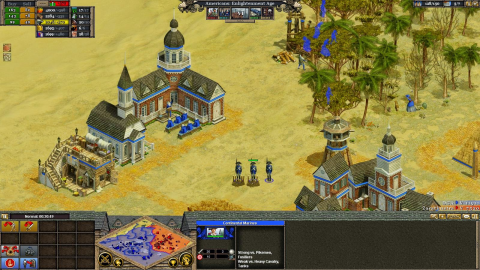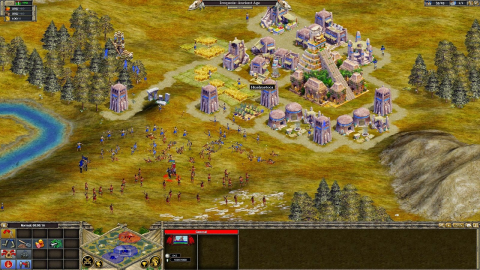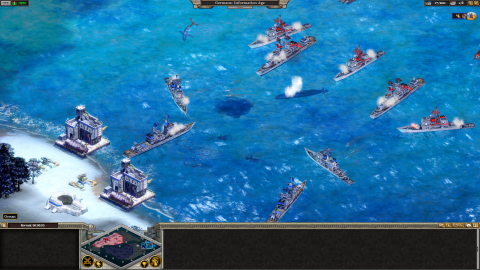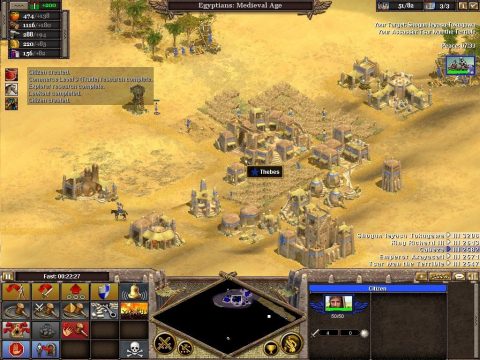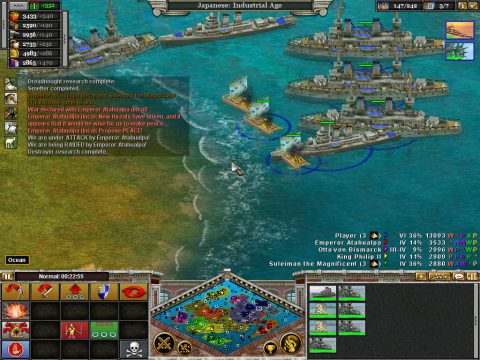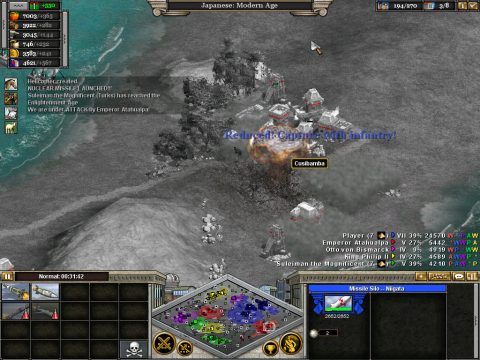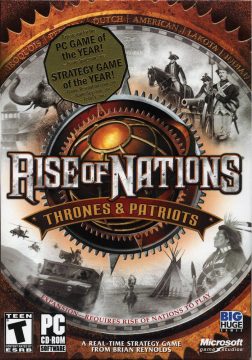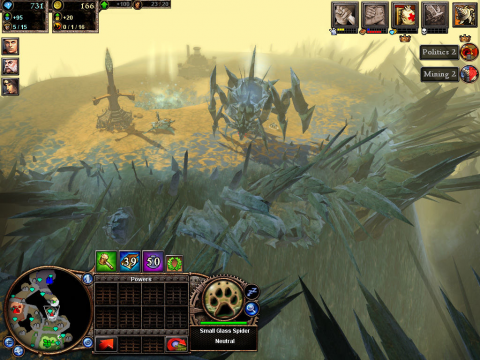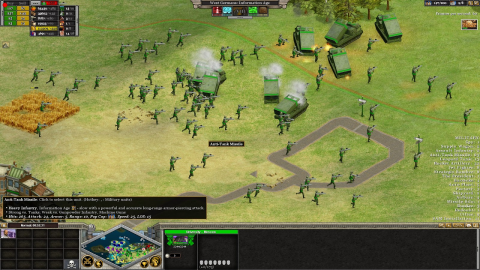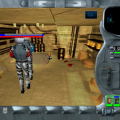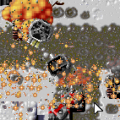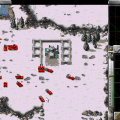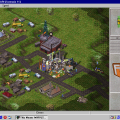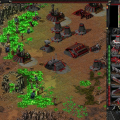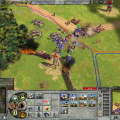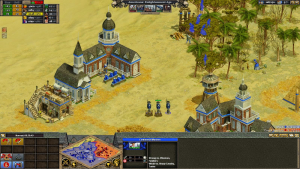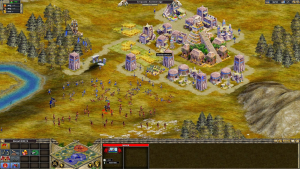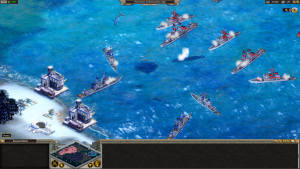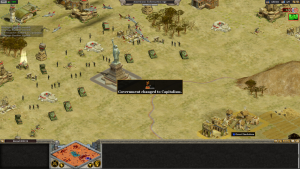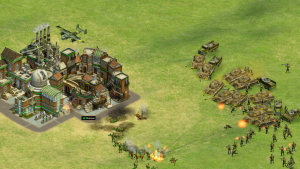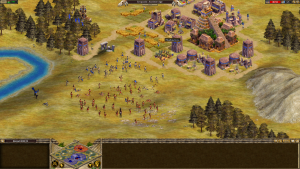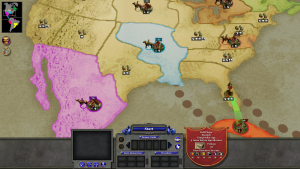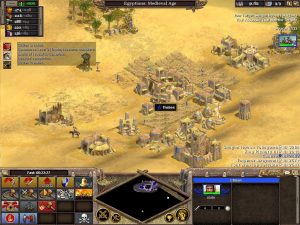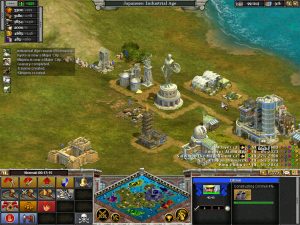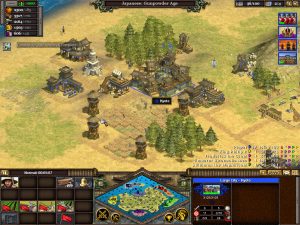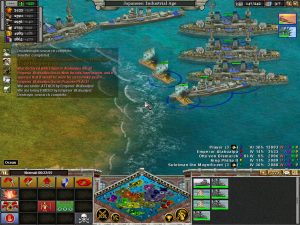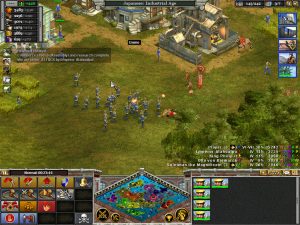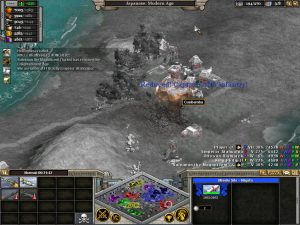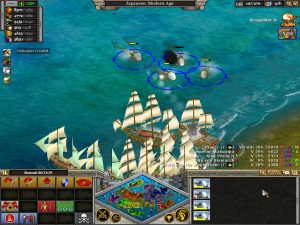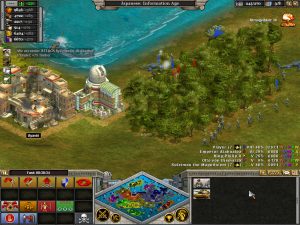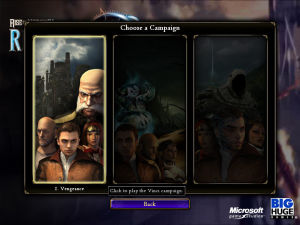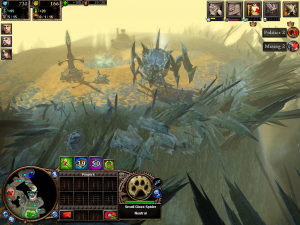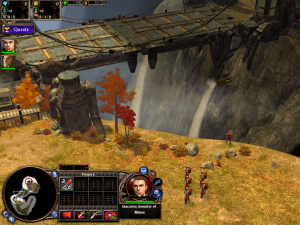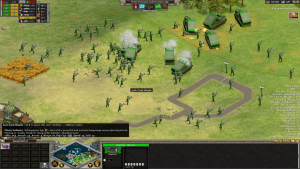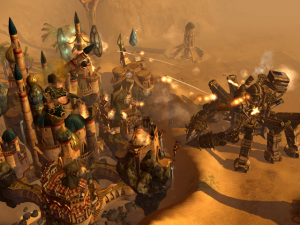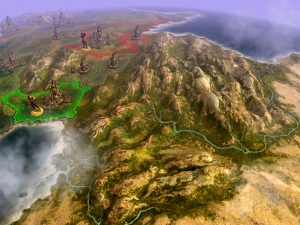In the realm of real time strategy, history has proven itself time and again a reliable subject matter. When done well, as the Company of Heroes games demonstrate, it can also translate into sales. Conveying an epic scope of the ages meanwhile – such as the Total War and turn-based Civilization series – while retaining relatively accessible gameplay tends to be a more daunting task. More often than not, attempts at it tend result in piling on as many time periods in one game as possible; in the case of Empire Earth, this could even extend to adding sci-fi elements like robots.
Enter Brian Reynolds and Big Huge Games. Reynolds, previously the lead designer for strategy classics Civilization II and Sid Meier’s Alpha Centauri, took on the challenge of creating a RTS game that succeeds in integrating elements from his previous turn-based work in a seamless, entertaining package. The result was Rise of Nations, released on the PC in 2003. The game’s premise was in essence “Age of Empires meets Civilization” with its own unique flavor added into the mix. It went on to garner acclaim from both professional critics and strategy aficionados, spawn its own spin-off and inspire a fanbase that persists to this day.
Befitting its spiritual predecessors, Rise of Nations is focused on world history. More specifically, the game covers about 6,000 years of it. Playing as one of 21 distinct civilizations over several generations, you’re tasked with building a nation, dealing with neighboring realms, fighting for survival and eventually conquering the world.
All this is conducted on variable, randomized maps in a manner that, at first glance, would be familiar to anyone who’s played RTS games in general. City centers create citizens, which serve as the player’s builders and resource-collecting workers. There’s a basic “rock-paper-scissors” dynamic to combat, determining how effective certain unit types are to others. And similarly to Age of Empires, the player can progress through eight “Ages” – Ancient, Classical, Medieval, Gunpowder, Enlightenment, Industrial, Modern and Information – gaining more abilities, upgrades and technological advantages in the process. These however are largely where the similarities end.
A major addition to that tried-and-tested formula is the deceptively superficial introduction of national borders. Carried over from Sid Meier’s Alpha Centauri, these mark your country’s territory. Those boundaries can also be expanded by building cities, fortresses, and researching the appropriate technologies; capturing enemy settlements can likewise do the same, though with an “assimilation” penalty making city defense all the more vital. In addition, they can be used aggressively through attrition, an upgradable ability that can whittle down enemy units and even structures within your frontiers. These cleverly simulate the idea that you’re not just forging (and protecting) a base but a full-fledged civilization.
To further drive the nation-building elements home, there is a greater, if streamlined emphasis on civil development. In addition to bolstering and upgrading your military, attention’s also placed on researching civic and economic technologies as well as the sciences. These in turn provide several benefits to your fledging society, from increasing the number of cities you can build to raising your gathering efficiency to reducing costs for further upgrades for your armies and advancing to new Ages. Trade, whether through caravans or rare resource merchants, is strongly encouraged as it provides wealth vital to sustaining both your nation’s economy and ability to wage war. Constructing “Wonders” like the Pyramids, Terracotta Army or Statue of Liberty meanwhile provides strong bonuses and a higher chance of scoring a cultural victory. While diplomacy – whenever possible – provides opportunities for setting up alliances that can turn the tide of a match to your favor. When put together with in-game options that allow for peaceful economic races, Rise of Nations comes across as what Civilization would look like when played in real time.
The factions themselves, while not so wildly different from each other ala Starcraft, are diverse enough that they allow for various playstyles. Alongside a set of unique units, each has a national power: a series of advantages that are distinct to particular countries based on historical trends. These can range from the subtle – be it the Egyptians’ food gathering bonus or cheaper naval units for the British – to the more blatant like Russia’s amplified attrition – based on the infamous “General Winter” – or the Chinese ability to insta-build civilians and support more units. In other words, no single faction plays the exact same way, encouraging various strategies to make the most out of them.
That isn’t to say that combat has been sidelined altogether. War, it’s been said, has helped shaped history more profoundly than one may like to think. And Rise of Nations makes an effort in following conflict though the centuries. Along with the aforementioned “rock-paper-scissors” mechanic, there’s a large, adjustable unit cap that allows for massive battles across the game map; the tendency for most individual infantry units to be represented as squads of three helps add to the illusion of scale. At the same time, researching military technologies is not only vital but can alter the battlefield itself. Upgraded units by themselves are considerably more powerful than their earlier forms, with sufficiently advanced ones often gunning down masses of lower-age warriors with relative ease, including those who would have defeated their earlier-age equivalents. On the other hand, those improvements come with different battle dynamics that can turn the basic mechanics on their heads, whether it’s deploying firearms, inventing flight, or eventually developing nuclear weapons; as an added touch, an “Armageddon Timer” exists that counts down to zero and ends the game if you get too trigger happy with the atom. Thus some strategies that work in one period are not guaranteed to work in others, requiring the player to be more flexible when it comes to sending soldiers to victory or death.
These are all in turn complemented by a variety of game options, competent AI, detailed tutorials based on historical events like the Battle of Britain, multiplayer and a flexible scenario editor that lets you customize maps if not create your own mods. In of themselves, these would already been enough to make Rise of Nations a complete game if not for its other additions.
While the game has no real “campaign” or “story” to speak of, the closest it gets to one would be “Conquer the World”. As the name suggests, the goal is to take over the planet, one territory at a time through a turn-based Risk-style board map from the Ancient to Information Ages. Despite what the title might suggest though, it’s also possible to win through alliances with other nations or just surviving to the final turn.
One aspect that distinguishes this from the game’s standard mode is its use of the aforementioned overworld map. Reminiscent of the early Total War games, the player builds up territory strength, conducts diplomacy and purchases special cards. All these involve using “tribute” which can be generated at the end of each turn and earned after taking over a full continent, surviving attacks from enemies or simply attacking them yourself. As it becomes apparent however, this tends to come across as very basic if not outright simplistic in execution. Serving as little more than window dressing for the real content of the campaign.
The action itself takes place on maps that generally correspond to the territories they’re meant to represent, the enemy’s size and strength dependent on how strong their land value is in the overworld. Depending on who and where one is fighting, the goals can range from the standard “conquer the enemy capital” objective to defending your own settlements or killing a certain number of units within a certain time limit. This doesn’t mean though that they take place in a vacuum. The cards you buy and collect over the course of the campaign provide several bonuses and abilities, whether it’s starting with additional military units or economic booms. Rare resources and Wonders accumulated over time also become available after reaching a certain technology level, giving significant boosts over foes. If one has an adjourning friendly or allied army, they can even show up as well-needed reinforcements.
The end result, coupled with randomized outcomes, is a mode that despite its limitations helps extend Rise of Nation’s longevity. But all these would likely be moot if the game was lacking in sights and sounds. Thankfully, even in this aspect it makes an effort to prove such concerns wrong, despite appearances.
One peculiar aspect of the game would be its presentation. Its graphics in particular are a “2.5-D” mix of sprites and three-dimensional models on an isometric map. Even putting into account the generally lower standards for RTS visuals in 2003 compared to other PC games of the time, this approach would have been considered somewhat dated at best, especially when compared to contemporaries like the Age of Empires spin-off Age of Mythology. Voicework meanwhile is very minimal outside from tutorial narrations and occasional battlefield screams. But the devil, so the saying goes, is in the details.
Rise of Nations compensates however through the considerable attention put down to even the smallest detail. Terrain and building sprites for instance bear not only intricate designs but also small, animated touches. These are especially evident when zoomed up close, ranging from birds flying over trees to smoke bellowing from active refineries and even farm grain swaying with the wind. Units themselves are well animated and defined. You’ll find a group of riflemen idly loading their guns, dying pikemen pitifully clinging onto their weapons, smoke bellowing out from a missile silo or just regular citizens going about work in an oil refinery. Even down to the rotting bodies of downed soldiers on the battlefield, such seemingly minute points help convey a living world that other RTS games tend to overlook.
This extends to how the various playable civilizations are depicted, from the diverse architectural styles to unit fashions and weapons. Even among nations that share the same cultural grouping, there are subtle differences here and there distinguishing one from the other. Among other examples, Industrial Age Germans could be seen donning World War I gas masks, the Japanese have the Zero for their default Modern Age fighter and Russians have Hinds for their Information Age helicopters, while the Koreans go even further in having a full aesthetic set unique only to them. Thus the game largely avoids the generic “sameness” issues the first Empire Earth experienced.
The visuals are in turn complemented by appropriate audio. Despite the minimal voicework, the sound effects remain suitably atmospheric. From your workers’ varied hums of industry to clashing blades to even the heavy din of gunfire, there’s a sense of weight given to whatever happens onscreen. The soundtrack itself is also notable in that while fittingly diverse in themes, the tone dynamically changes depending on how your country is faring in-game. Victorious streaks bring up triumphant, bombastic music while bleak, mournful laments play as you lose whole armies and cities to enemies. These all come together to covey the idea that along with leading a civilization, you’re putting at stake the fate of an entire people with the glory and tragedy that come with it.
So what then does all this mean for Rise of Nations? The end result is a pretty good game in its own right, but like the great powers of history, isn’t without its flaws. The “Conquer the World” mode eventually comes across as repetitive and somewhat incomplete. The presentation, for all its attention to detail can come across as resembling a more polished Age of Empires II. It also has an occasional tendency to crash particularly during multiplayer – a point brought up in the Computer Gaming World review for the game – though it doesn’t occur so often as to be much of a hindrance.
Still, with deep yet easily accessible gameplay, long playability, and a considerable reverence of sorts to the source material and its inspirations, the game more than compensates for its faults. Indeed, it went on to not only garner stellar reviews from the press but was also voted by Gamespot and Gamespy as the top strategy title and top PC game for 2003 respectively.
It was seen in many ways as a significant, if welcome surprise especially considering that this was Big Huge Game’s first release. But Brian Reynolds and company didn’t rest on those laurels as they quickly followed up on their success, which came out about a year later. Released in 2004, the Thrones and Patriots expansion pack builds on what worked in the main game by providing additional campaigns, factions and features alongside a generally more polished experience.
Six new nations from across the world are added to the already large ensemble. The Lakota/Sioux for example can build anywhere on the map and have borders that are completely invisible to enemies, while the Dutch can both deploy armed trading units and crash their foes’ economies with massive wealth. Their aesthetics are just as varied, whether it’s the addition of Native American cultures, the unique, rustic and colonial trappings of the Americans or ornate marble-white structures of the Indians.
The presence of new Conquer the World campaigns are another welcome addition, themselves based on various scenarios from Alexander the Great’s exploits to the Cold War. Unlike the original however, these are much more structured and customized, each campaign having its own distinct conditions, map designs and even unique gimmicks. The New World campaign, for instance, requires the Americans to overcome their British masters and eventually go against the other Europeans, while the Cold War one includes espionage side-missions, buildable nukes and an accurately depicted DEFCON meter determining how close your global exploits are to provoking nuclear Armageddon. But while it’s possible to play the campaigns close to history, the scripting also allows for “what if” scenarios and to a degree anticipates them; it’s possible to conquer Britain as Napoleon or even have the Soviets invade US soil ala Red Dawn without ending up an irradiated wasteland.
It’s in the gameplay itself, though that Thrones and Patriots really comes into the fore. One noticeable addition is the Senate building, allowing you to enact a government and choose from various types. These are even more reminiscent of Civilization and Alpha Centauri albeit in a more simplified form, providing certain advantages and trade-offs to your country, be it military-focused Despotism, civic-minded Democracy or production-centric Socialism; in an added touch, switching to more modern types retains previous benefits while adding new ones. The Senate also generates a “Patriot” leader-unit representing both your government type and faction leader in particular, who leads your men into battle. While this may seem a token addition at first glance, this nonetheless adds an additional layer of strategy as one’s choices can affect how your nation handles itself and its enemies.
Combined with general improvements in performance helping to both increase playability and reduce the possibility of crashes, Thrones and Patriots succeeds in building on the successes of the main game while being successful in its own right. It’s no surprise that this garnered almost as much attention as, if not even more so than the original.
So in light of all this, one eventually ends up with this question: Why hasn’t Rise of Nations become the next Civilization or Age of Empires? While it is true that the game and its expansion pack garnered sales of more than a million copies, a feat especially when compared with the more high profile and well advertised Age of Empires series, Rise of Nations couldn’t quite sustain its own momentum.
In 2006, Rise of Nations was followed up by a successor, Rise of Nations: Rise of Legends. Unlike the original, this dropped historical pretensions altogether in favor of a hybrid fantasy/science fiction setting that essentially pits Renaissance Italy, Arabian Nights Middle Easterners and Chariot of the Gods-esque Mesoamericans against each other. One of the most immediate changes in fact is the presence of an actual story arc following an inventor named Giacomo of the steampunk Vinci, as he pursues the evil Doge for killing his brother. What looks like a tale of vengeance across the Italian-inspired city-states of the Vinci however quickly turns into a globe-spanning adventure as his party crosses the magical desert realm of the rival Alin and into the jungles where the extraterrestrial “Gods” of the Cuotl rule. While not necessarily the best plot for a RTS, it nonetheless was a welcome change of pace compared to others out at the time.
To streamline gameplay, Rise of Legends also drops some of the features of its predecessor in favor of a Starcraft-style mechanic for its three factions and more fluid action, all while taking the series fully into 3-D. This becomes evident in the distinct manner in which each nation handles combat, construction, economics and even claiming settlements on the map a la Age of Mythology. At the same time however, the Conquer the World campaign is reworked such that while more linear compared to Rise of Nations, still allows for freedom on which territories, each with their own bonuses and side-missions that benefit you in the long run.
The end result, according to most reviewers at the time was a somewhat unambitious but unique game that managed to preserve the spirit of what made the first entry so enjoyable. But despite the warm reception, a mixture of low-key advertising and unfortunate timing for its release date meant that it was relegated to a sleeper hit at best before sliding into relative obscurity. IGN’s Voodoo Extreme in particular awarded it “The Best Game No One Else Liked” in that same year. Big Huge Games went on to produce titles like Catan, the Age of Empires III expansion The Asian Dynasties and the fantasy RPG Kingdoms of Amalur: Reckoning before filing for bankruptcy in 2012. Brian Reynolds himself went to work for Zynga in 2009, only to leave in early 2013 and re-establish Big Huge Games the following year, their first game DomiNations for mobile taking cues from both its RTS predecessors and entries like Clash of Clans.
Although the odds for a new Rise of Nations sequel remain up in the air, the IP rights to the franchise have since been acquired by Microsoft, already with welcome results. In 2014, both the original game and expansion pack were re-released on Steam as Rise of Nations: Extended Edition. In addition to revamping the now-decade old RTS with HD visuals and improved textures, the game was integrated into Steamworks and Twitch. In the process, it had also helped revitalize the franchise’s fanbase while introducing more gamers to an updated classic.
More than anything else, Rise of Nations is proof that melding turn-based strategy into an RTS can work well. That the daunting, seemingly immense scale of history can not only be made manageable but also enjoyable without sacrificing either gameplay or historical content. That despite its age and seemingly stillborn potential, conquering the world still stands the test of time.
